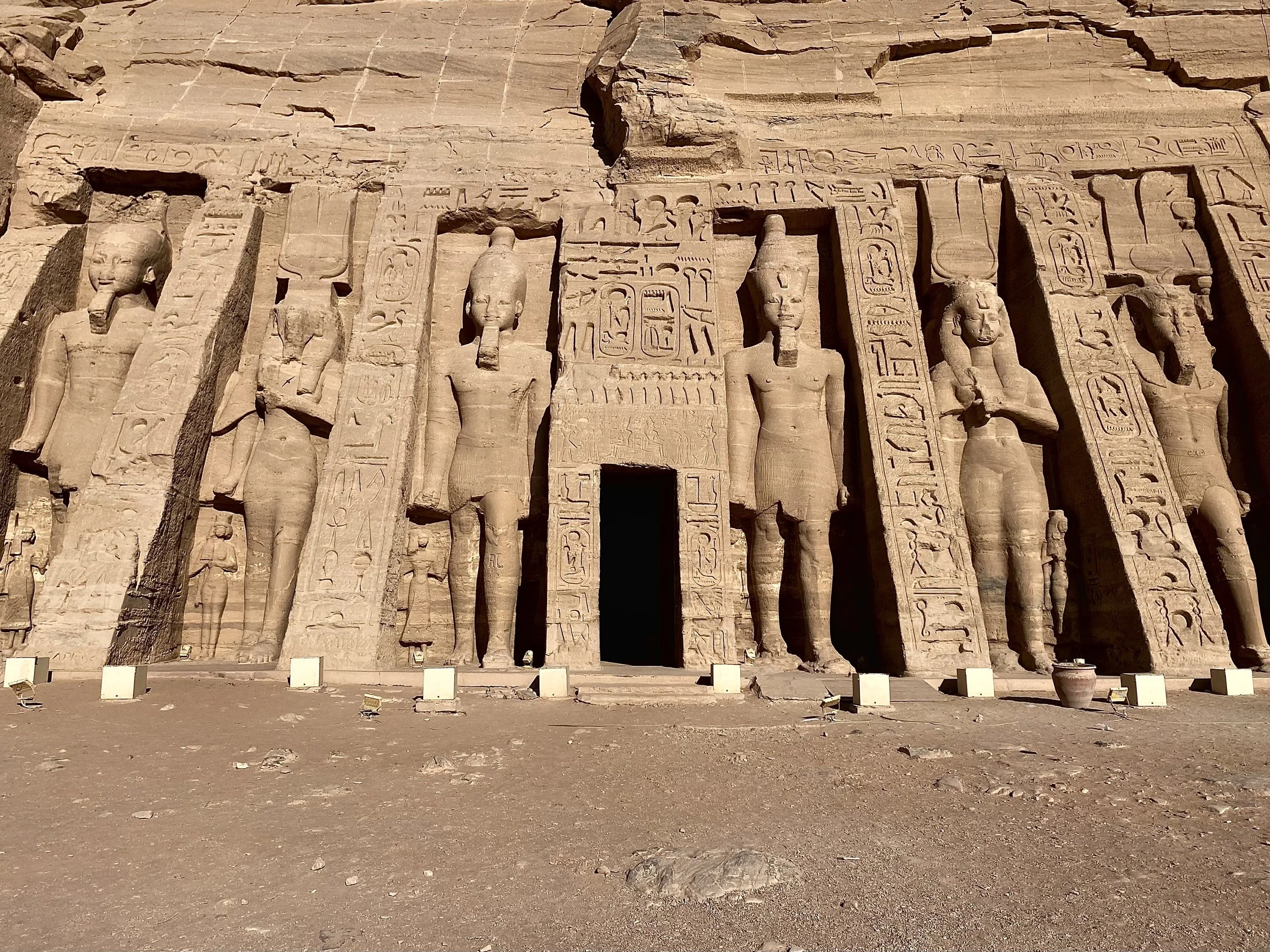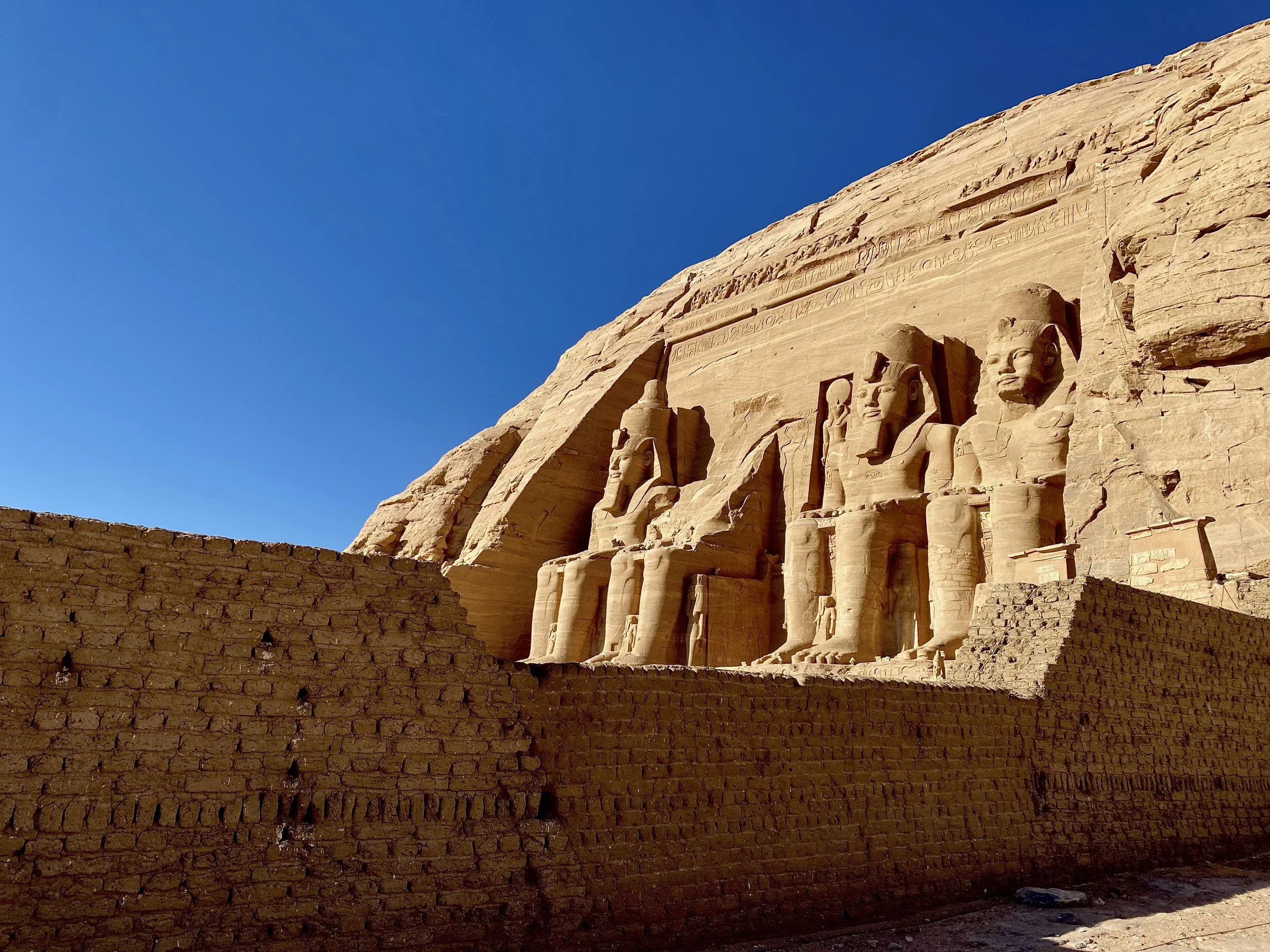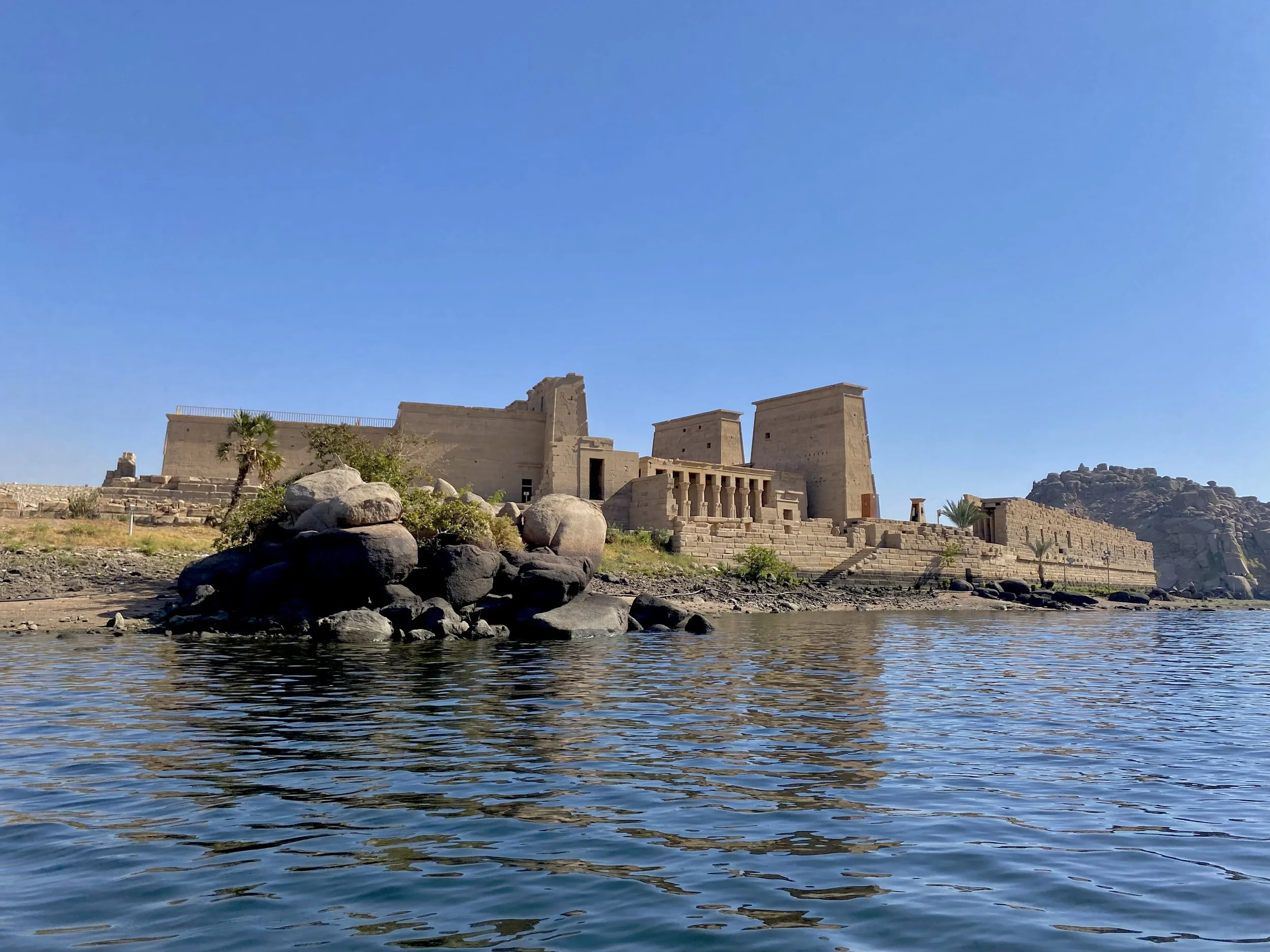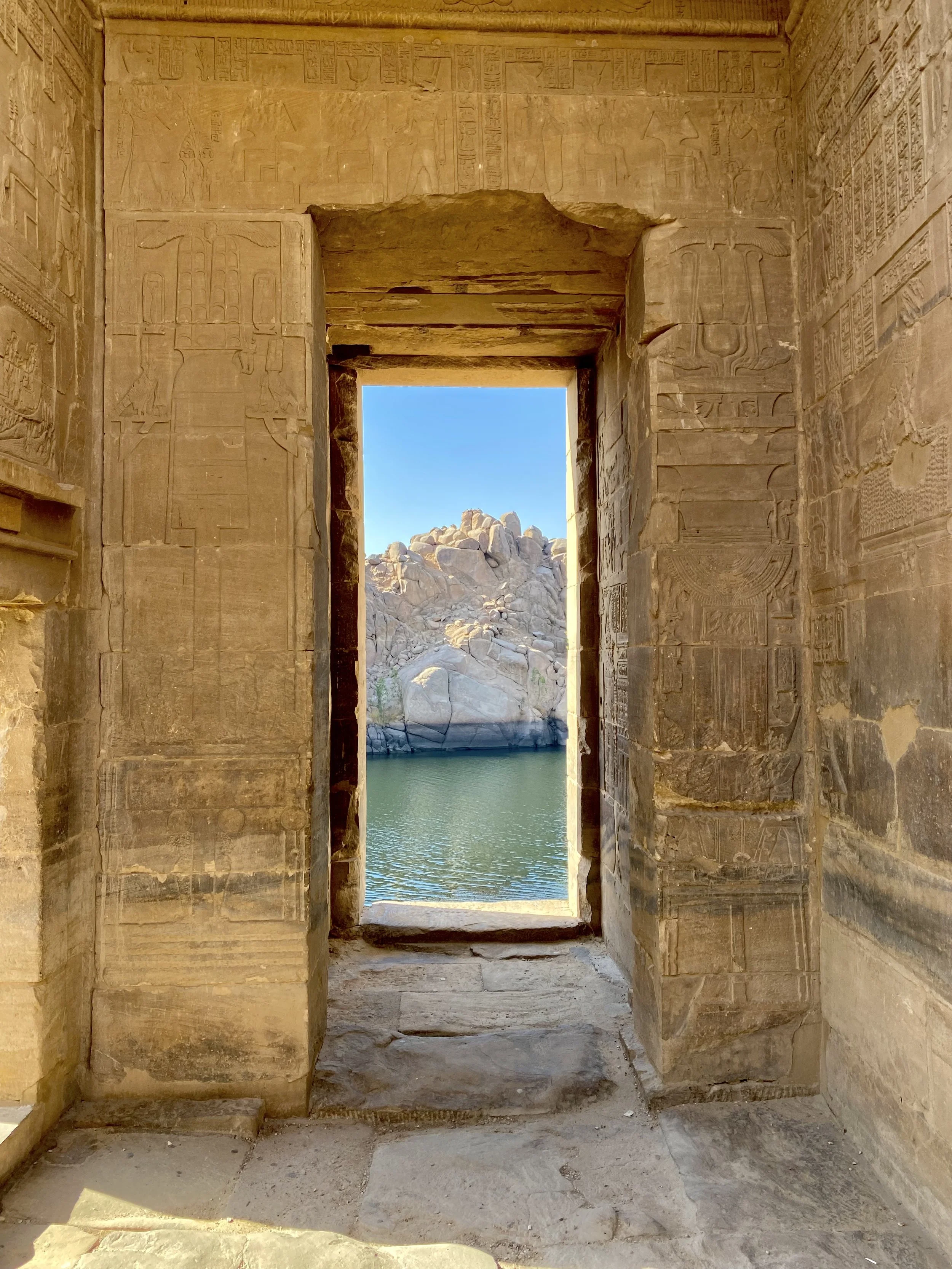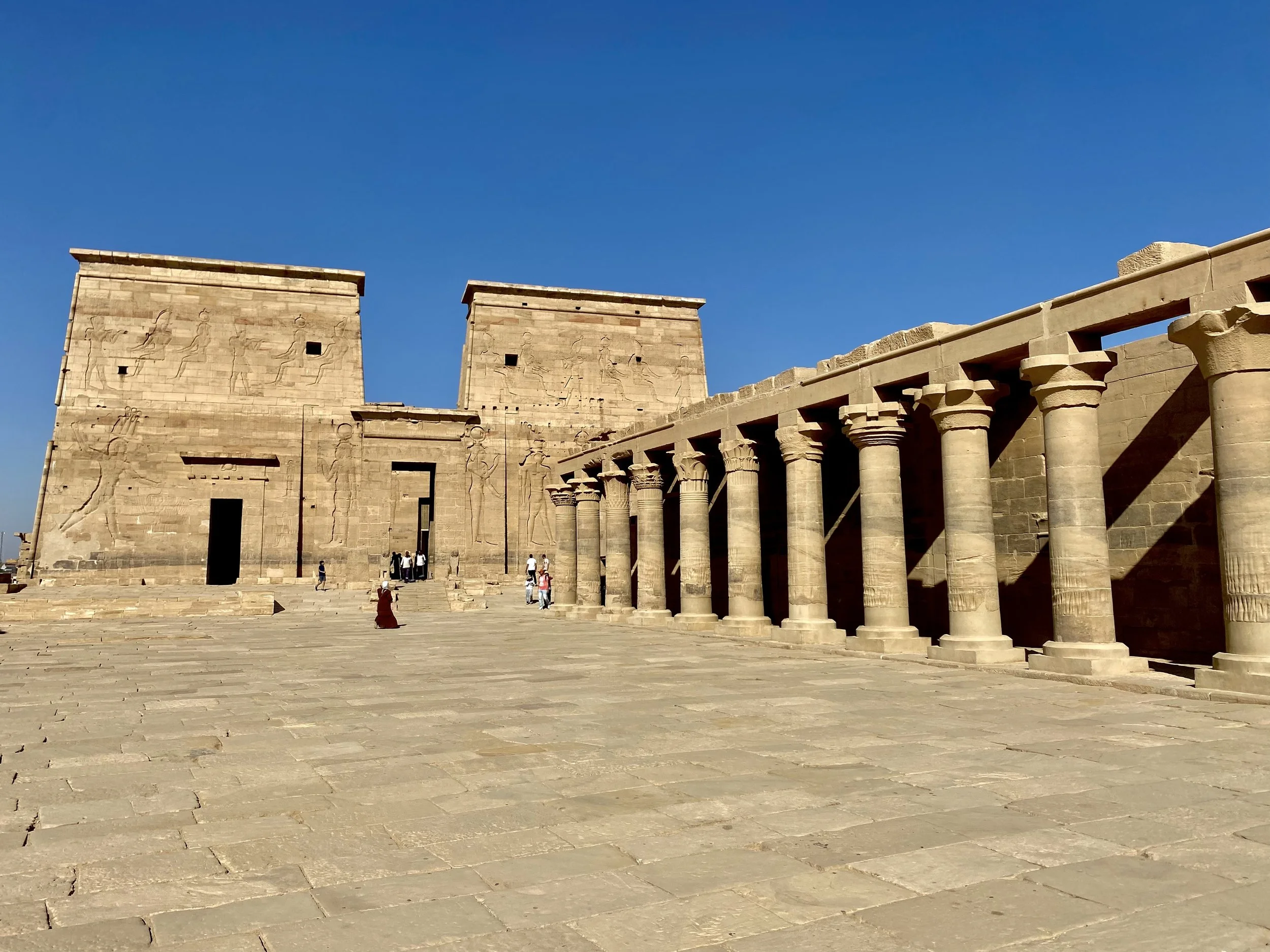Wonder How Temples Get Moved in Aswan
A City that Flooded Many of its Heritage Sites
Aswan was the southernmost city in Ancient Egypt - a frontier town that marked the border to Sudan in the South. The city and surrounding area is full of quarries - and its sandstone and marble were used to build temples and monuments throughout the country Now, it may be most famous for the Aswan High Damn - a billion dollar feat of engineering that stopped the annual Nile flooding - but also flooded thousands of archeological pieces in the process.
What I’ll remember most about Aswan is the massive recovery effort that happened in the late 20th century to save the flooded heritage sites. Enormous temples were taken apart piece by piece and reassembled in non-flooded areas. Each time you come face to face with one of these relocated pieces of history, I assure you will also be struck with a resounding question of “How?”
In terms of the city itself, Aswan was my least favorite place I explored in Egypt - a city more marked by poverty and decay than the other major destinations in the country. Walking casually around the city can be challenging and unpleasant - marred by a lack of pedestrian infrastructure, bad air quality, trash, and the not-so-occassional child beggar. While I think exploring Aswan is a good experience - I can’t say that it is an entirely pleasant or relaxing one. It’s more the kind of visit that puts life into perspective - and helps to re-consider what one perceives as essential or takes for granted.
Last, I’ll give a general note about preparing for a trip to Egypt. There’s a reason that most tourists stick to Nile cruises and rigidly scheduled tours. Traveling as a backpacker and spending more time in local areas is not for those who don’t do well without material comforts - or who have strong reactions to situations their bodies take in as unpleasant. Going off the beaten tourist path in Egypt can be challenging - exhausting and emotionally draining - and it can also be extremely rich and rewarding - from lesser seen temples to wonderful meals with locals. My general advice for traveling Egypt is to go in knowing yourself and the experience you want to have; there’s nothing wrong with choosing comfort and the security of knowing everything will go according to plan. There’s a different richness of experience of just going along for the ride and seeing what happens - but you have to have a high ability to stay cool, patient, and open-minded.
Visit Abu Simbel
The most famous of the relocated heritage sites are the two temples built by Ramses II (one for him and one for his wife) that were relocated more than three hours south in Abu Simbel along Lake Nassar. Known for their massive stone carvings of Ramses II and his wife that decorate the fronts of the temples, they are two of the most famous temples in Egypt. For many tourists, visiting is the only purpose of going to Aswan at all.
You can take an organized tour day trip to see the temples in the morning; they leave about 5AM and arrive to Abu Simbel around 8:30 AM. Alternatively, there is a public bus that leaves around 6AM and can take up to 5 hours each way. The roads down are full of security checks because of the nearness to the Sudan border - so it is a slow moving journey. It is, however, worth it.
Take a Boat to Philae Temple
The second most famous relocated heritage site is a complex of temples that used to be on Philae Island - Philae Temple. They were all moved to a nearby island and assembled in a way to preserve important aspects of their physical location, such as how they are located with respect to the sun and each other.
To get to Philae Temple, you’ll have to take a boat from the East Bank. In addition to offering a nice Nile boat trip, the delight of Philae Temple is that there aren’t many tourists - so you’ll get to explore a marvelous set of ruins in relative isolation. It was one of my favorite experiences in Egypt.
Other Things to Do
While most tourists, myself included, only see a few sites in Aswan, there is actually a lot to get up to if you stay for more than two days. Here are some of the most common:
Explore the West Bank Tombs: On the West Bank of the Nile are several lesser traversed UNESCO world heritage sites: the Old and Middle Kingdom tombs of Qubbet el-Hawa, and at the end of a hike from the tombs, the Monastery of St. Simien
Visit a Nubian Village: On Elephantine island in the Nile, there are two Nubian (southern Egypt and Sudanese ethnic group) villages along with some nice natural areas.
See How Obelisks are Made: At a large stone quarry in Aswan, there’s a partially constructed obelisk. It helps to see the scale of ancient Egyptian construction - and to really grasp that they used to carve out of single pieces of stone.
Take a Boat Trip: At the end of a day in Aswan, you can take a sunset felucca ride along the Nile.
Head to a Museum: To learn more about the ethnic group native to Southern Egypt and Sudan, you can go to the Nubian Museum.
Shop: Near the train station is an extensive tourist souk (market). Just be prepared to bargain hard - and to say no often.
If you have the opportunity to plan your trip as you go, I recommend starting your stay in Aswan at just two nights and then deciding when to leave from there. If your experience is like mine, you’ll be ready to leave after the two days. However, some people are more charmed by Aswan - and like to stay longer to see more of the sites. It’s hard to tell how you’ll feel about the city until you’re there.


